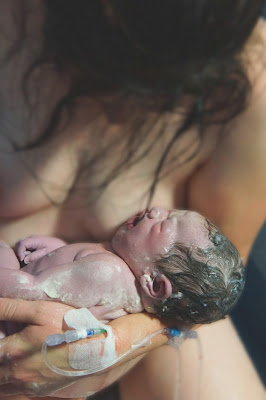This post is dedicated to all the mums who are seeking answers for the difficult breastfeeding journey they have unexpectedly found themselves on.
Keep following your gut, don't give up. That feeling... it's never wrong.
The Basics...
Tongue tie (TT)– When the piece of skin (lingual frenulum) attached from the underside of the tongue to the floor of the mouth or gum ridge restricts the mobility and functionality of the tongue due to its length, thickness or inelasticity.
This frenulum may be attached anywhere along the underside of the tongue from the back (posterior) to the tip (anterior). Likewise it can be connected to the floor of the mouth at the back or all the way up to the gum line.
Posterior TT- Commonly health professionals who might diagnose a TT don’t look beyond the obvious foremost TT most people are familiar with. When the frenulum isn't attached at the tip of the tongue it is not very easily seen, therefore, missing or dismissing a PTT is an easy mistake to make.
I think too much focus is put on the terms anterior and posterior, these terms only refer to where the conection is in the mouth, in simple terms, in the back halk or front half.
Upper Lip Tie (ULT) – When the piece of skin (labial frenulum) connecting the underside of the top lip and the upper gum is too tight or too low down the gum affecting the ability for the lip to flange out.
Frenotomy – The procedure of releasing TT and or ULT. The frenulum is cut with scissors to allow free unrestricted movement of the tongue and upper lip.
 |
| Minutes old the lingual frenulum is captured in this photo. Photo property of Louise David IBCLC |
Ties and Breastfeeding...
There is great conflict amongst medical professionals in regards to their views on TT and how TT affects breastfeeding. The most common conflict is between pediatricians who believe TT in no way impacts breastfeeding and lactation specialists who believe undoubtedly their role in causing breastfeeding difficulties cannot be denied.
When one understands the mechanics of breastfeeding and the oral function of the baby and how milk is removed the role a TT plays in interfering is understood. This purely comes from experience. Recent practice has seen the role of ultrasound technology to view the inside of the mouth while the baby is breastfeeding. This is absolutely not necessary when the experienced lactation specialist assesses a breastfeed.
For parents it can be a rough road to finding answers when they’re dealing with practitioners whose practice is not supportive of bf. Its hard for any practitioners practice to be evidence based in the area of breastfeeding and TT as research in this area whilst its emerging its still lacking. Anecdotal evidence is insurmountable and common sense prevails.
A tongue and lip tie cannot be diagnosed without a thorough oral assessment and its impact on breastfeeding cannot be assessed with out a feed being watched. All too often I hear mothers saying the doctor said “she doesn’t have a tie” and "the doctor didn’t even look" under the babies tongue.
Whilst some TT are so glaringly obvious others, further into the underside of the tongue, takes correct technique to expose the frenulum.
It is not a difficult difficult technique and it is very easy to learn. With practice any practitioner can become experienced in TT diagnosis and should be able to assess the restricted tongue.
The correct and most reliable way to assess the mouth, the baby should be placed with her head in the assessors lap with her bottom and feet supported by mum or dad. The tongue can then be elevated and the level of restriction noted (Kotlow 2017).
Then, and even more importantly i believe, a full breastfeeding obeservaion by a practitioner who knows what they are looking for can complete the tie assessment, putting together how what the finding in the mouth is affecting the action at the breast .
The breastfeeding relationship can be highly successful, that is comfortable, pain free with a thriving content baby, when the right practitioner is employed for support and intervention if necessary. The language the practitioner uses and the answers to your questions are a dead give away about how much your practitioner knows not only about TT but also more importantly about breastfeeding.
Furthermore, there is skill in a practitioner acknowledging their limitations and referring to another practitioner when they are not confident in assessing TT, rather then denying a TT or dismissing the parents concerns.
 |
| The same baby as above. Nipple feeding. Her latch did not improve until the tongue tie was corrected. Photo property of Louise David IBCLC |
Signs and Symptoms of Tongue and Lip Tie...
Mother
- Pain during feeding
- Squashed or ridged nipple
- Cracked/bleeding/blistered nipples
- Nipple vasospasm
- Mastitis
- Low milk supply
- Oversupply
Baby
- Difficulty latching or staying latched
- Clicking sound
- Milk spilling/leaking when feeding
- Poor weight gain (from birth)
- Poor weight gain following good weight gain (delayed)
- Tongue “snap back” or “biting” action when feeding
- Long and frequent nursing sessions
- Fast nursing sessions with extreme fussiness
- Falling asleep quickly as if tiring out, then waking soon after wanting to feed again.






















































